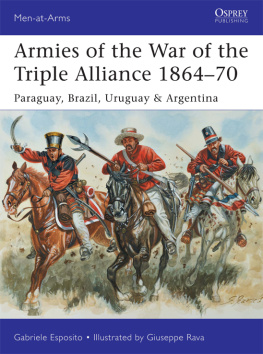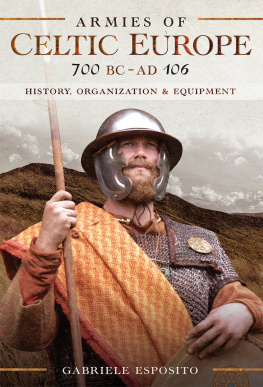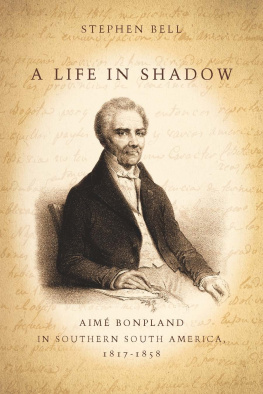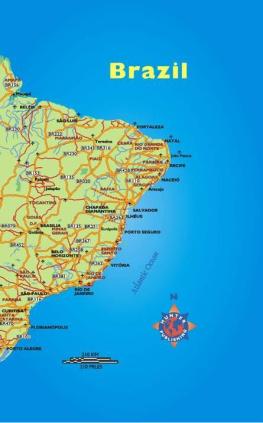Men-at-Arms 499
Armies of the War of the Triple Alliance 186470
Paraguay, Brazil, Uruguay & Argentina
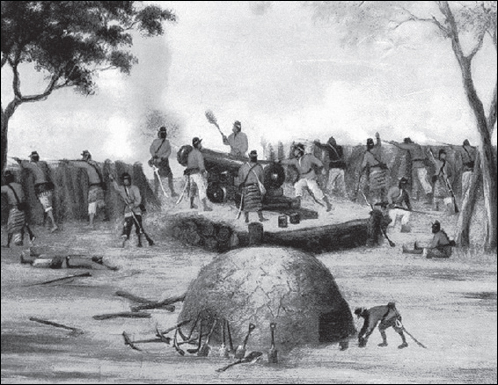
Gabriele Esposito Illustrated by Giuseppe Rava
Series editor Martin Windrow
CONTENTS
ARMIES OF THE WAR OF THE TRIPLE ALLIANCE 186470
INTRODUCTION
T he War of the Triple Alliance, also known as the Paraguayan War, was the greatest military conflict in the history of South America. It was fought between four countries: by Paraguay, against an alliance formed by Brazil, Uruguay, and Argentina. It was unique in South American history for the numbers of troops involved and, above all, for its terrible cost in lives. These deaths were to a great degree due to privation, disease, and famine, which the belligerents were neither equipped nor organized to alleviate. Of Brazils approximately 50,000 deaths, two-thirds were from hardship and disease, particularly smallpox and cholera. The war cost Argentina some 30,000 lives, and the much smaller Uruguay nearly 5,000; but these losses pale in comparison with the catastrophic human price paid by Paraguay.
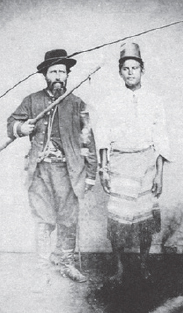
A Brazilian cavalry officer (left) with a captured Paraguayan infantryman. This is one of the few photos showing the almost universal Paraguayan shako and striped chirip kilt (see ). The Brazilian officer wears blue campaign dress; as so often, this private-purchase uniform does not accord with official regulations.
While the numbers are still widely disputed, some scholars have concluded that six years of war reduced the population of Paraguay from around 450,000500,000 people to 160,000 at most a loss of some 6570 percent of the countrys entire population and the productive life of the country was largely destroyed for decades.[]
The most important battle of the war, at Tuyut on May 24, 1866, was the greatest ever fought on South American soil, involving some 24,000 Paraguayans against 35,000 Allied troops. Casualty figures are approximate, and, given the rudimentary medical care available, the numbers listed for wounded certainly mask many additional fatalities. With these reservations, however, Tuyut probably cost Paraguay some 13,000 casualties (nearly 55 percent), of whom at least half were killed, and the Allies about 2,400 killed and 3,000 wounded (about 15 percent) a combined casualty ratio of 31 percent of those engaged on both sides. To put those figures in context: at Bloody Antietam in September 1862 the Confederates suffered about 30.4 percent casualties and the Federals around 17.7 percent, giving a combined ratio of 22.7 percent.
The distances involved meant that the war was initially a matter of columns of a few thousand men seeking each other out in rugged and sparsely inhabited territory, but after 1865 larger armies maneuvered for Napoleonic-style positional battles at points of strategic importance almost invariably, towns and forts on the major rivers. Most campaigns were conducted in marshy lowlands in a subtropical climate, and most of the soldiers found the punishing physical environment hard to endure. Their sufferings were exacerbated by poor and unreliable rations, and a lack of clean water. (The untrained officers were largely neglectful of their men, hygiene and medical care were often nonexistent, and cholera and typhoid wiped out whole units.)
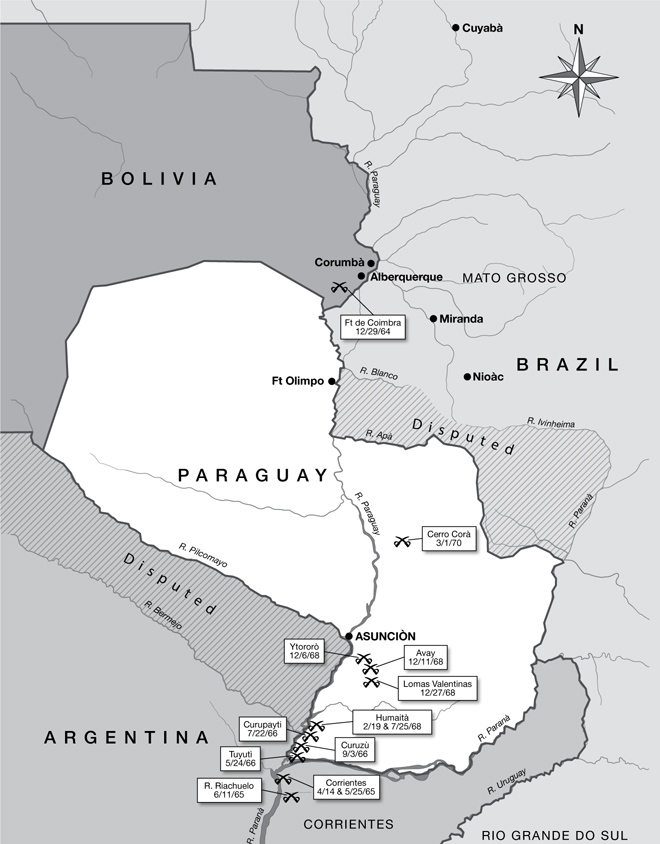
Paraguayan territory during the War of the Triple Alliance, showing the approximate locations of the most important battles. The more open country west of the Rio Paraguay is known as the Chaco, and the more wooded eastern region between the rivers Paraguay and Paraa is the Paranea. The decisive campaigns of the war were fought in the southeastern Central Lowlands. These have a very humid subtropical climate, with abundant rainfall throughout the year but particularly in MarchMay and October November so the many rivers run through swampy jungle valleys.
From the military-historical standpoint, the War of the Triple Alliance was the first modern conflict fought in South America. Being more or less contemporary with the Crimean and Austro-Prussian wars and the American Civil War, it was influenced by many developments from abroad. The war saw the first major employment in South America of military communication by telegraph, the transportation of troops and supplies by railway, and the use of observation balloons. New weapons, such as the Gatling gun, were tested, and smoothbore muskets were outclassed by new rifles employing the Mini system. This in turn led to a gradual change in battlefield tactics, such as the abandonment of the frontal cavalry charge. Cavalry had traditionally been a dominant element in South American warfare, but (as during the American Civil War) it now began to transform itself for an essentially mounted-infantry role. Medical services increased in importance under the scourge of disease, which could potentially destroy an entire army on campaign. For the first time the technical corps, the artillery and engineers, came to the fore, and new guns introduced for the artillery effected the construction of forts and fieldworks. In the field of riverine naval warfare, steam-powered and iron-clad vessels became dominant.
Before the War of the Triple Alliance the armies of South America were small, semi-professional at best, and not supported by the populations upon whom they often preyed. Political instability saw them repeatedly involved in internal struggles, and very frequently they were simply bands of followers of whichever caudillo currently held power. They had no discipline or training to speak of, their weaponry was obsolete, and they were seldom tested by being called upon to perform the tasks faced by professional soldiers elsewhere. The innovations and the harsh lessons of the Paraguayan War changed all this, leading to a general acceptance of the need for professionalism among the continents armies. In the years between 1875 and 1910, all the South American countries would invite European military missions to train and organize their forces, with significant results.
See Thomas L. Whigham, essays in Latin American Research Review: The Paraguayan Rosetta Stone: New Evidence on the Demographics of the Paraguayan War 186470 (1999); and Refining the Numbers: A Response to Reber & Kleinpenning (2002). Numbers were estimated by applying standard statistical models to prewar and postwar census records, such as they are.
THE ROAD TO WAR
Paraguay had achieved its independence in 1811 in a very particular way. In 1810, provoked by Napoleons forced replacement of King Ferdinand VII of Spain with Napoleons brother Joseph, most Spanish possessions in South America launched their wars of independence. The leaders of the United Provinces of La Plata (later named Argentina) expected that the territories of their new nation would encompass those of the former Spanish viceroyalty, including Paraguay and Uruguay. But their plans were thwarted in this regard: Uruguay, an enclave on the Atlantic coast surrounded by Portuguese Brazil, was still a royalist stronghold with a strong Spanish garrison, and Paraguay was still loyal to its Spanish governor.
The new Argentine government tried to conquer both these territories. Uruguay was occupied, but was subsequently lost to the Portuguese. The Argentine Gen Manuel Belgrano was sent to occupy Paraguay, which had been left defenseless by the Spanish, but the local inhabitants rallied to the militia and, after a minor battle, defeated the Argentine expedition. The Paraguayans declared their independence without Spanish opposition, and without being annexed by Argentina.

